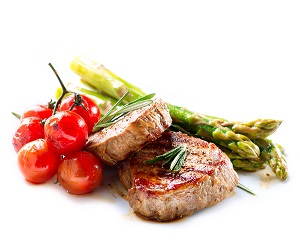
How we process and digest our food is very important for weight management but also for overall health. When our body starts the digestion process, it is expending a lot of energy while at the same time it is speeding up our metabolism and burning calories. Poor digestion can also give us that uncomfortable, full feeling and lead to a host of health issues. So, it should be a goal to combine our foods in a way that allows for optimal digestion and maximum energy output.
When food isn’t digested correctly, much of the undigested food will remain in the digestive tract which will then create toxins in the body. Such toxins can lead to health problems and damage your internal ecosystem to varying degrees. The latter can cause a series of other health problems particularly later in life when the aging process happens and our metabolism slows naturally.
By practicing proper food combinations, the digestive system will work easily and at full force so that your body absorbs the necessary nutrients, your energy level is increased and you are less prone to illnesses.
The Basics of Food Combination
Fruit Consumption
Fruits should always be eaten on their own and on an empty stomach. Additionally, everyone should eat only natural fruits rather than those that are processed and canned in syrups as these tend to be loaded with additional sugar and calories.
Fruits such as berries, apples, bananas and pomegranates are great as they have antioxidants, are lower in sugar and easily digested. You can also eat grapefruit, kiwi, pineapple and strawberries in larger quantities but always by themselves and not in conjunction with other foods during that snack time.
Combining Proteins and Vegetables
For proper food combination it is also good practice to eat a lot of protein but to combine such proteins with non-starchy veggies. The stomach uses hydrochloric acids and enzymes such as pepsins to break down proteins such as poultry, eggs and other types of meat which can create an acidic realm.
When we eat heavy starches such as potatoes and pasta the stomach will also create what is known as the enzyme ptyalin which on its own has great digestive powers. However when it is combined with pepsins, both of these enzymes will counter one another and decrease how the digestive system works. In addition, once mixed together, the digestive system becomes stagnant and this creates a highly acidic environment in which toxins will multiply and disease can form.
Instead of combining proteins and starches, eat them separately and instead combine proteins with leafy and non-leafy veggies so that the digestive system can perform at its peak. The best protein and vegetable combinations are those that include lean meats, fish and poultry and then adding in veggies such as leafy and dark greens like spinach, asparagus and green beans but also other vegetables such as turnips, squash, zucchini, beets, broccoli and cauliflower.
It is always best to steam vegetables lightly so that they retain their nutrients and refrain from frying. Instead steam or sauté in a light olive oil or low sodium broth for added flavor.
Separate Grains and Starchy Vegetables
Starchy vegetables such as butternut squash, lima beans, peas, corn and potatoes are difficult to digest and are also higher in carbs than leafy vegetables. Since grains are also heavy and not easy to digest, it is best to eat them separately. Grains composed of white flour are most difficult so it is better to choose brown or wheat based rather than those made with white flour which are high in sugar.
Other Food Combining Tips
The fats you include in your diet should be non-saturated fats and aim to cook with organic or unrefined oils such as olive, pumpkinseed or flax seed oil instead or corn or vegetable oils.
For healthy fats combine a good amount of seeds and grains along with vegetables such as water cress, kale and avocado which have healthy fats that the body needs for fuel and energy. Avoid fats found in mayonnaise and limit the amount of salt intake as this will cause the digestive system to retain water and slow down.
For a quick cheat sheet you can follow these basic rules:
- Greens and non-starchy vegetables combine well
- Lean proteins should be eaten with green veggies and non-starchy vegetables.
- Starches and starchy proteins should be eaten with greens, non-starchy vegetables and fats.
- Fats and fatty proteins should be eaten with greens, non-starchy vegetables, and starches.
- Fruits should be eaten alone.
- Sweeteners are best eaten on their own or not at all as some contain cancer causing chemicals.
For more articles go to http://lifesportfitness.lifestyleezine.com
